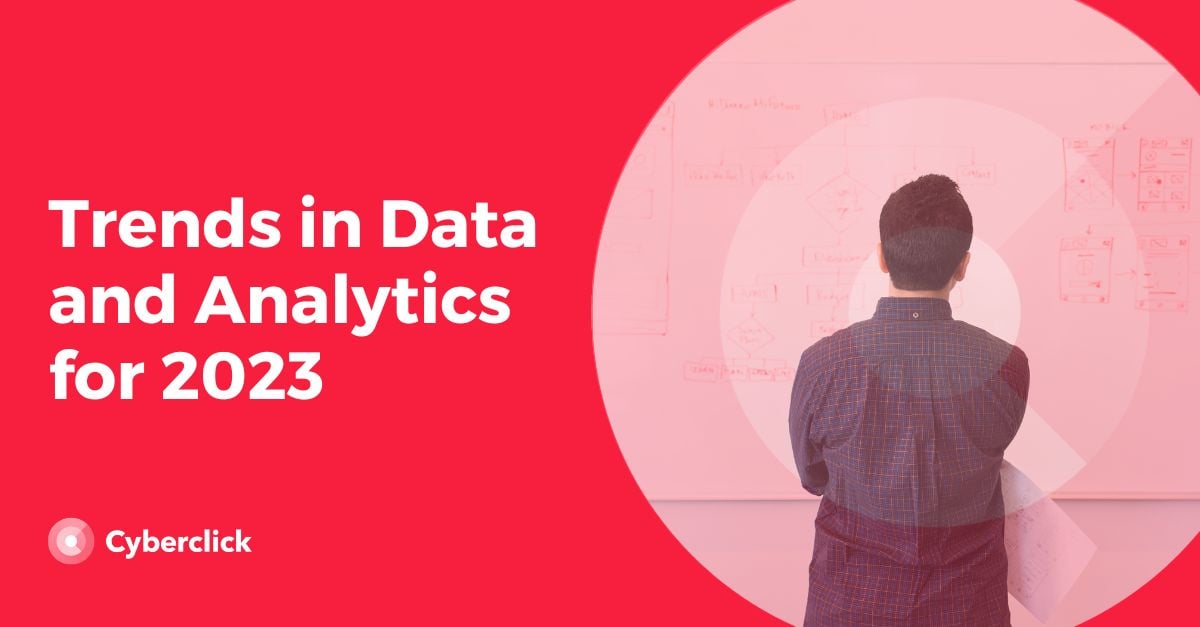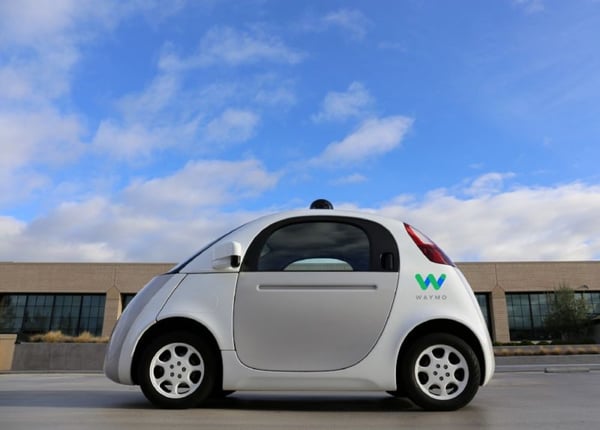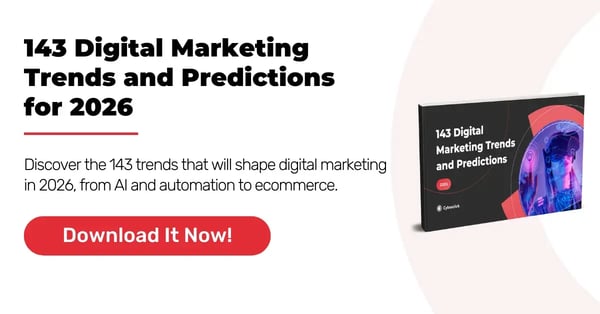In digital marketing trends, big data and analytics are two of the most innovative sectors of the marketing world today. According to a report by DataToBiz, global big data market revenues will exceed $100 billion by 2027.
Big data analytics is one of the most powerful technology trends and is revolutionizing multiple sectors globally, from healthcare to the fourth industrial revolution. Thanks to cloud applications, companies can now monitor and analyze data in real time and make improvements faster than ever.
This technology will undoubtedly be the talk of the internet in the next few months, so let's take a look at the top trends for data and analytics in 2023.

Trends in Data and Analytics 2023
1) Digital Transformation
Digital transformation is driving technology in all directions as we delve deeper into the internet of things, machine learning and big data.
In 2020 there were 9.7 billion devices connected to the internet; by 2030 that number is expected to reach 29.4 billion. The immense amount of data generated by these devices means big data’s role in our world in only growing.
At the same time, artificial intelligence will play an increasingly important role in data processing, as it will be essential for extracting meaning from the enormous amount of data we are accumulating. In the coming months and years, we will continue to find new applications for digital transformation.
2) Business Intelligence
Business Intelligence (BI) uses software and services to deliver actionable information that provides its users with detailed conclusions about the state of their business. In the coming months and years, this discipline will continue to develop and reach all sectors. We will see its influence on both strategic and tactical business decisions.
Forecasts indicate that the global value of the BI and analytics market will reach 18 billion by 2025, so we expect to see growth at all levels. Collaborative BI will make valuable information available without the need to know how to use a specialized platform, making data more accessible to non-technical users.
3) Cloud Technology
More than 70% of enterprises have migrated at least a portion of their workloads to the cloud, and cloud adoption is expected to be even higher in the coming years. According to a McKinsey study, enterprise cloud spending exceeded budgets by 23%, and about 30% of that spending was not properly leveraged.
Cloud-native technologies are the only sustainable solution for our business and IT structures, as they are constantly evolving. But due to their complexity, there is a need for standardized, self-service tools that allow non-technical users to collect, analyze and interpret data.
4) Data as a Service (DaaS)
Estimates indicate that the data as a service (DaaS) market will reach 11 billion in revenue by 2023. This sector has reached a point where even smaller players can easily enter the sector and generate revenue. Even the most extreme niches can derive value from data.
If the data generated in your company can offer value to others, data as a service could be an interesting way to generate revenue. So it's a great time to rethink your data offering and discover new ways to contribute.
5) Technology and Wellness
The health and wellness sector is taking a leading role in our lives, and data is a very important part of it. For example, medical services are discovering new ways to communicate with their patients, and companies are striving to discover and implement strategies that improve the health of their workers.
Companies now have the ability to collect medical data from around the world and use it in new ways to identify treatments faster than ever before. In the future, we expect this trend to help create more efficient medical systems for people.
6) Driverless Vehicles
We've been hearing about autonomous driving for years, but now it's even closer to becoming a reality. Alphabet's autonomous vehicle company, Waymo, is already using autonomous vehicles at its locations in Phoenix and San Francisco. Walmart has also been using an autonomous vehicle program in Arkansas since 2020.

Fuente: Arstechnica
As companies continue to use data derived from these early experiments with autonomous driving programs, the only possible way forward is to keep moving forward. In the coming years, big data will help further define ways to implement driverless vehicles into our lives safely and efficiently for everyone.
7) Big Data to Aid Climate Change Research
In order to make progress in the fight against climate change, it is absolutely imperative that the debate and actions to be implemented are data-driven.
Backing up the predictions of organizations fighting climate change with solid data will help to move beyond debate and start collaborating globally to implement the actions needed to combat this threat.
Big data provides an unbiased source of information about what is actually happening on the planet and, in combination with technologies such as AI and analytics, will help determine the most effective actions to coordinate efforts between governments and businesses.
8) Real-Time Analytics Gain Traction Post-Pandemic
During the 2020 covid pandemic, data not only helped in the search for treatments and vaccines, but also in managing crowds and maintaining social distance.
For example, smart surveillance cameras can count how many people enter and leave a venue and alert once maximum capacity is reached. They can also be placed at key points that generate bottlenecks and detect times when the flow of people becomes too dense, making it difficult to maintain social distance.
Another interesting use of data over the years has been to identify hotspots and patterns of contagion, for example, the existence of superspreaders.
Now that we have moved beyond social distance measures, we expect that in the coming months these advances will contribute to the development of data science in general.
9) More Natural Language Processing (NLP)
Big data, AI, the internet of things and machine learning are breaking down barriers in the interaction between technology and people. And natural language processing (NLP) is what allows us to put a more human face on all these technologies.
Natural language processing allows humans and machines to communicate "as equals", which helps eliminate misgivings and encourages the adoption of new technologies.
Thanks to NLP, users will be able to interact easily with intelligent systems, without having to overcome a learning curve. This will allow new technologies to be integrated into their daily lives in a much more comfortable and natural way.
10) Automation of Big Data Analysis
Automation is one of the biggest drivers of transformation in today's data environment. In particular, big data analytics automation is one of the most promising areas and one that we believe will gain prominence in 2023 and beyond.
Analytics process automation (APA) will deliver a wealth of information and predictive capabilities to organizations, particularly related to the role of computing power in decision-making processes. The result will be that companies using it will be able to be more efficient in both generating results and reducing costs.
11) Augmented Analytics
Augmented analytics plays a revolutionary role in data gathering, processing, and sharing by combining artificial intelligence and machine learning protocols. Their highly sophisticated algorithms are capable of producing context-aware suggestions, automating tasks, and analyzing conversations.
In some specific sectors, such as defense or transportation, augmented analytics will enable the rationalization of the growing amount of business data and will be applied in more and more areas, which will further increase its effectiveness.
In the coming years, augmented analytics will grow in importance hand in hand with augmented consumers: business users who will employ automated, contextual, mobile and natural language capabilities as part of their analytics process.
12) Security Analysis with Big Data
Due to the extremely rapid advance of digitalization, conventional data security strategies are lagging behind, leading to an increase in cybercrime and data security breaches. Logically, this poses a concern for companies.
In this context, big data security analytics can be a great help, as they facilitate the collection, storage, and analysis of large amounts of security data in near real-time. As a result, they help to detect and combat threats effectively.
Security analytics with big data makes it possible to process huge amounts of data and manage it to protect against cyberattacks.
13) Robotic Process Automation (RPA)
Robotic Process Automation or RPA is a cutting-edge technology that allows robots to be created, deployed, and managed to mimic human actions by interacting with digital systems and software.
The great advantage of RPA is that it allows large volumes of work to be carried out without human error, and at high speed. We believe it will be increasingly adopted by industries and companies that value accuracy and efficiency. Therefore we believe it is one of the key data and analytics trends for 2023 and beyond.
14) Artificial Intelligence as a Service (or AIaaS)
AI as a service consists of an external entity offering advanced AI functionalities in exchange for a subscription fee.
This trend will be especially important for small and medium-sized companies, as it will help harness the power of AI without the need for in-house capabilities.
Applications of AI as a service include customer service, data analytics, and production automation. It is an easily accessible, cost-effective, transparent, and scalable technology, so we believe it has everything to become one of the data and analytics players of the future.
15) Predictive Analytics
As defined by IBM, predictive analytics is a branch of advanced analytics that makes predictions about future outcomes using a combination of historical data with statistical modeling, data mining techniques, and machine learning.
With the rise of data, predictive analytics will become indispensable for companies that want to identify risks and opportunities and seek appropriate solutions, especially in sectors such as weather, healthcare, or scientific research.
16) Migration to the Cloud
Cloud migration is the process of moving digital assets such as data, workloads, IT resources or applications to cloud infrastructures, based on an on-demand, self-service environment.
Cloud migration has great benefits for enterprises, as it enables real-time performance and efficiency with minimal levels of uncertainty. Because of these advantages, more and more companies will migrate their digital assets to the cloud to become more profitable, agile, and innovative in their business operations.
Data Scientist en Cyberclick. PhD en Astrofísica por la Universitat de Barcelona con más de diez años de experiencia en investigación mediante el análisis e interpretación de datos. En 2019 redirige su carrera profesional hacia el mundo del Data Science cursando el Postgrado en Data Science y Big Data de la UB, así como participando en el programa Science To Data Science (S2DS) en Londres. Actualmente forma parte del equipo de Data Science y SEM de Cyberclick.
Data Scientist at Cyberclick. PhD in Astrophysics from the University of Barcelona with more than ten years of research experience through data analysis and interpretation. In 2019 he redirected his professional career to the world of Data Science by graduating in Data Science and Big Data from the UB, as well as participating in the Science To Data Science (S2DS) program in London. He is currently part of Cyberclick's Data Science and SEM team.





_%20Advantages%20for%20Marketing.jpg)
Leave your comment and join the conversation